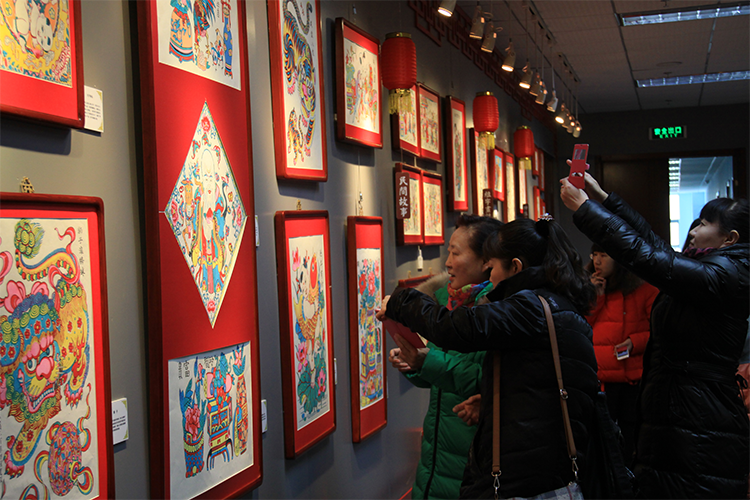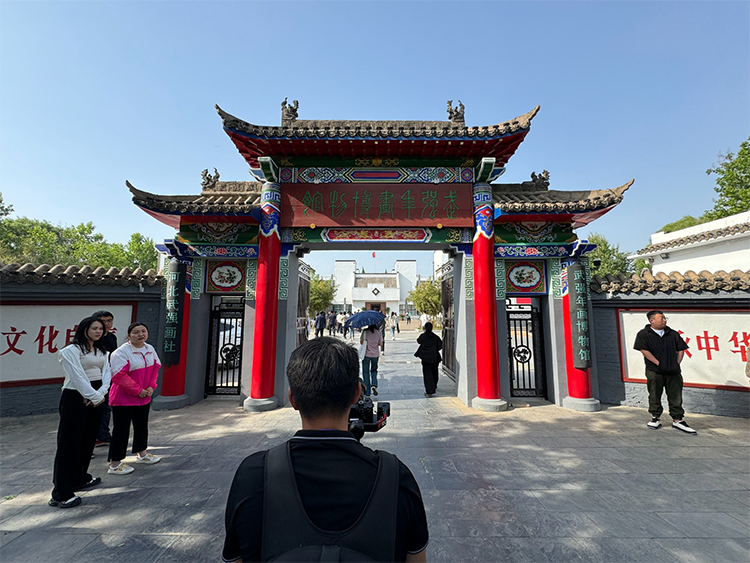Discover the Intangible Cultural Heritage at Wuqiang New Year Painting Museum
In Wuqiang County, Hengshui City, Hebei Province, China, the Wuqiang New Year Painting Museum (Wuqiang New Year Painting Specialized Museum) preserves a unique chapter of Chinese folk art. As China’s first museum devoted specifically to New Year paintings, it is both a guardian of national intangible cultural heritage and a living art venue. Entering the museum feels like stepping through time: vivid door gods, dramatic opera figures, and scenes of rural life reveal popular beliefs, aesthetics, and everyday wisdom passed down through generations.
1. Museum Highlights and Focus
The Wuqiang New Year Painting Museum is the only specialized museum in China that comprehensively showcases the history, techniques, and culture of woodblock New Year paintings. Known as a “living fossil of Chinese New Year painting art,” it focuses on the distinct craft of Wuqiang woodblock prints, celebrated for finely carved blocks, bold artistic style, and rich folk meaning.
Unique selling points:
– National intangible heritage site: In 2006 Wuqiang New Year painting was included in the first list of national intangible cultural heritage items; the museum serves as its core protection and display base.
– Living cultural experience: Beyond finished prints, the museum demonstrates carving and printing techniques; visitors can try printing themselves.
– A compendium of rural imagery: Subjects include door gods, myths, opera scenes, and festival customs—an encyclopedia of Chinese folk society.
2. History, Architecture, and Status
Founded in 1985 to rescue and protect the nearly lost woodblock New Year painting techniques, the museum now houses more than 10,000 antique woodblocks and over 6,000 rare New Year paintings, making it one of the world’s richest collections for research and preservation.
Architectural style:
The museum is built in a traditional style—red walls, gray tiles, upturned eaves—that harmonizes with the classic spirit of the prints. Inside, modern exhibition technology blends with traditional elements so visitors can both immerse themselves in the art and learn the cultural context.
Industry status:
– An authoritative research center for Chinese New Year paintings, drawing folklorists and artists from home and abroad.
– A key national-level museum and a benchmark for intangible cultural heritage protection.

3. Key Exhibits and Artistic Experience
Treasure pieces not to miss:
1. “Door Gods: Qin Qiong and Yuchi Gong”
One of the most iconic Wuqiang works: bold colors, strong lines, and imposing figures embody folk beliefs in protection and warding off evil.
2. “Year after Year of Plenty”
A lucky-themed print showing a child holding a carp, symbolizing abundance every year—a favorite during Spring Festival celebrations.
3. “Journey to the West: Havoc in Heaven”
Based on theatrical storytelling, the exaggerated poses and full compositions demonstrate folk narrative power and imagination.
Exhibition layout and cultural narrative:
The museum contains six major galleries:
– “Millennia of Charm”: Traces the historical origins of New Year paintings from the Song and Yuan through Ming and Qing dynasties.
– “Home of New Year Paintings”: Introduces Wuqiang’s distinctive style and regional characteristics.
– “Woodblock Carving Techniques”: Shows the production process from wood selection and carving to printing.
– “Folk Customs”: Uses prints to interpret Chinese folk beliefs, festival rituals, and social life.
Academic value:
Exhibits present artworks and build a complete cultural narrative, helping visitors understand how New Year paintings carry Chinese spiritual and social meanings.
4. Atmosphere and Visitor Profile: An Immersive Folk Journey
– Who will enjoy it: folk-culture enthusiasts, art students, families with children, and photographers.
– Ambience: The museum balances solemn traditional art with interactive fun—especially the hands-on printing area that fills with laughter.
– Space design: Soft lighting and clear circulation; some areas recreate traditional print workshops for strong immersion.

5. Itinerary Suggestions and Practical Tips
Recommended routes:
– Quick highlights (1 hour): Head to the “treasures” gallery → visit the woodblock techniques area → try a printing session.
– Deep dive (2–3 hours): Walk the six galleries in chronological order and join interactive activities.
Suitable scenarios:
– Family education: Kids can try printing and learn traditional culture hands-on.
– Academic study: Ideal for art and folklore students and researchers.
– Photo stop: Capture the vivid colors and compositions of New Year paintings.
Combination recommendations:
– Half-day: Wuqiang New Year Painting Museum + Wuqiang Folk Village (more traditional crafts).
– Full day: Hengshui Lake (natural scenery) + Wuqiang New Year Painting Museum (culture).
6. Practical Tips
Guided services:
– Audio guide: No English audio guide currently; bring a translation app for better understanding.
– Live guide: Chinese-language guided tours can be arranged—large groups should book in advance.
Booking and crowds:
– No reservation required: buy tickets on arrival. Weekends and holidays are busier—mornings are best.
– Closed day: Monday (except public holidays).
Language support:
– Labels: Mostly Chinese; important exhibits may have English captions.
– Front desk: Staff are friendly but have limited English; patience and a translation app help.
Payments:
– Tickets: CNY 30 for adults, CNY 15 for students and seniors (ID required). Cash, WeChat Pay, and Alipay are widely accepted; international credit cards may be inconvenient.
Facilities:
– Wi‑Fi: Free museum Wi‑Fi is available and generally stable.
– Food: No on-site restaurant; nearby local snack stalls offer regional flavors.
– Accessibility: Basic accessible facilities and wheelchair access are available.
7. Local Insights
Hidden gems:
– Printing experience area: Many visitors skip it, but printing your own New Year picture makes a perfect keepsake.
– Museum shop: Well-designed New Year painting-themed notebooks, postcards, and tote bags are affordable souvenirs.
Avoid mistakes:
– No flash photography: Flash can fade pigments—please turn off flash when photographing.
– Special exhibitions: Temporary exhibitions may require separate tickets—check ahead.
8. Essential Information
– Name: Wuqiang New Year Painting Museum (China Wuqiang New Year Painting Specialized Museum)
– Address: No.1 Xinkai Street, Wuqiang County, Hengshui City, Hebei Province, China
– Opening hours: 9:00–17:00 (last entry 16:30), closed on Mondays
– Getting there:
– Bus: Take an intercity bus from Hengshui to Wuqiang County, then a short taxi ride (≈10 minutes).
– Driving: Free parking is available outside the museum.
Conclusion: Why Visit the Wuqiang New Year Painting Museum?
The Wuqiang New Year Painting Museum is more than a museum—it is a living shrine to folk arts. Here you can touch the aesthetic memory of agricultural China and feel ordinary people’s hopes for a better life. The brilliant colors, animated figures, and the joy of printing your own New Year painting will leave you with deep respect for this intangible cultural heritage.
If you want to experience authentic Chinese folk culture, the Wuqiang New Year Painting Museum is a must-visit destination.


